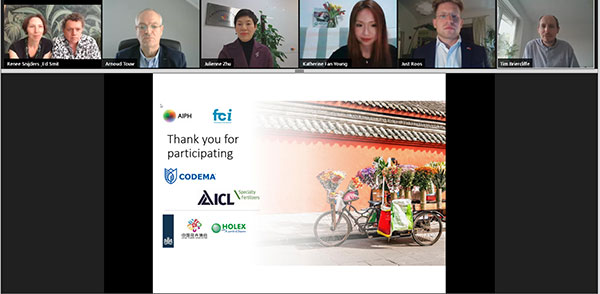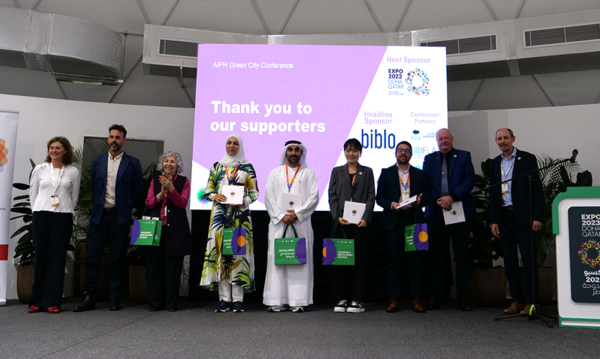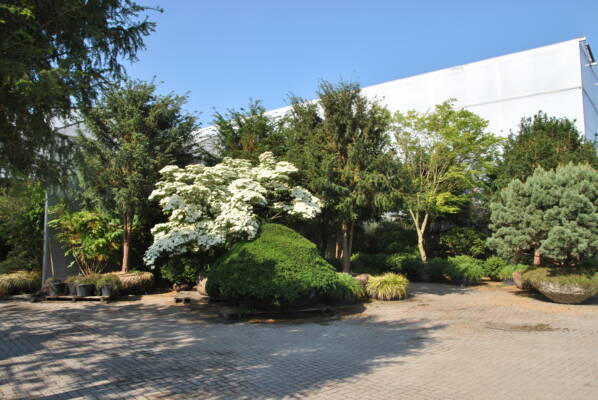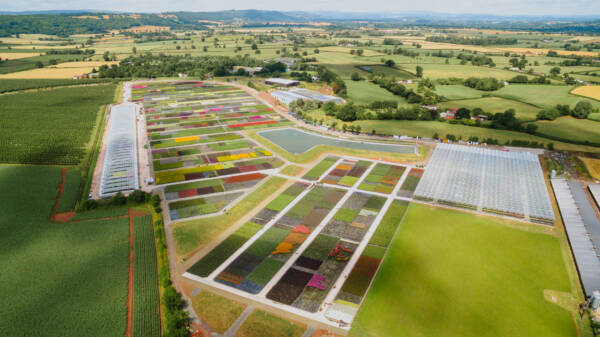BEIJING, China: Uncle Wang is becoming part of a growing band of ‘influencers’ in China who sell flowers and plants from their internet sites. His earnings do make impressive reading. In 2020, he sold the equivalent of €127,000 on ‘singles day’ (a celebration for unattached people on 11 November). It’s one of China’s most important floral shopping events, while his sales for the pandemic-hit year topped €7.7 million.
That’s just one example of how China’s market, once dominated by government contracts for floral decorations, is evolving, writes Spence Gunn. Flower markets and traditional flower shops account for two-thirds of sales. Still, online shopping and e-commerce are increasing fast, helped by the fact these new operators can save costs through centralised purchasing and packaging. “At first the e-platforms had difficulties managing quality, now they are so well organised the quality is often better than from a traditional flower shop,” says Wouter Verhey, an agricultural counsellor at the Dutch Embassy in Beijing. He was talking to participants at an AIPH webinar introducing the Chinese ornamentals market on 23 February.
He continues, “E-commerce has more than trebled since 2015 and was worth €4.6 billion in 2019. We expect it to reach €6.2 billion this year. It’s becoming the major route to the fast-expanding Chinese middle class.”
“There’s a real vibrant energy in the horticulture market here now,” says Arnoud Touw, the Asia business manager for international fertiliser and growing media supplier ICL who has worked in China for 30 years. “You can really feel the industry making huge strides.”
With initiatives such as ‘garden cities’ and ‘forest cities’, the country’s extensive urban development creates a massive appetite for nursery stock. Tax breaks and investment subsidies are enabling nurseries to boost production to supply that demand. Julienne Zhu, secretary general of the China Flower Association’s nursery stock section, says exports increase with growers keen to emulate the best-imported stock’s quality. “But they are looking for technical support in everything from nursery design to production techniques and mechanisation,” she says. “That means cooperation opportunities are waiting for international partners.”
Mrs Zhu adds that consumers are becoming more aware of brands, which means marketing and promotion need more sophistication. She expects the industry to develop along ‘western’ lines with growers becoming more specialised as breeders, young plant raisers or finished plant growers.
Dutch flower trader Holex started exporting to China eight years ago, opening an office in Shanghai in 2018 – it’s now the company’s second-biggest market. “Demand for quality and service is increasing,” says sales manager Katherine Fan Young. “Customers want more transparency and traceability. There will be more potential in supermarket retail though high volumes are not yet there.”
Consumer-led demand for better quality and value leads growers to invest in more ‘high-tech’ production facilities, says Just Roos of nursery engineering company Codema Cultivation Systems.
“Low-tech growers are ‘scaling up’ while there has been a shift from mid-to high-tech at large young plant companies,” he says. “And there is a new generation of growers being trained at mid-and high-tech facilities who are becoming familiar with the modern horticultural business model.”
Some new facilities – such as the vast high-tech rose nursery built in Lanzhou in 2019 by Bom Group with Chinese partner AiBiDa – are doing well. However, he warns that the business case for high-tech horticulture still needs to be proven in China. Few projects currently make operational profits, partly because the supply chain to the consumer needs further development to catch up.
“The floriculture cold chain still has gaps,” says Mr Verhey. “It doesn’t make sense to invest in technology to produce a higher quality if the cold chain is not in place.”
He says enforcement of intellectual property and breeders’ rights is perhaps the most significant barrier to China’s market development. Companies are hesitant to introduce technical innovations and new varieties from elsewhere.
Meanwhile, Chinese growers’ competitiveness on the international market also hampers because, for example, only 30% of Chinese flowers are deemed ‘high quality’ and reach international standards, says Mr Verhey. The market needs improvements in technology and management and a sound national strategy for data, market analysis, and promotion.
However, ‘ambitions are high,’ he says. With the ornamental horticulture and landscape industries already worth an estimated 20 billion US dollars, there is plenty of scope for growth and new business.
It’s not an easy market to break into, though, admits Zhu. She recommended working with Chinese partners because success depended on understanding China’s culture, policies, and business principles.
Mr Verhey suggests the first step for those wishing to understand China’s market should be to participate in activities organised by your country’s embassy or trade mission where these officials can put traders formally in touch with partners. “Even though the pandemic makes travelling to China impossible at present these are still happening online and at hybrid events,” he says.
Watch the webinar recording on-demand here.


























